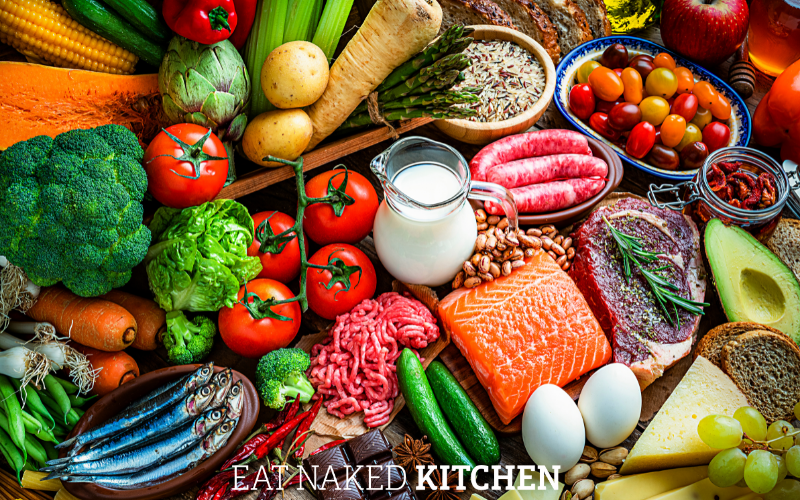Just this morning I was emptying my email promotions folder and a subject line from a well-respected influencer in the health space drew my attention: “these are the foods I eat every day,” it read. I hadn’t yet come up with an idea for this week’s blog, and I thought – oh, that’s a good one! I wrote about that a few years ago and I bet my list has changed.
And then, the feeling didn’t sit right as I realized, actually, I’ve changed. I used to try to get specific foods into my diet on a daily basis – sauerkraut for example, or bone broth – but now I’m trying to mix things up all the time and to rotate what I eat so that I’m not eating the same thing day in and day out.
You see, after years of working with clients through their healing process, what I see time and again is that the foods we eat the most often, are frequently the foods we are most sensitive to.
To understand why this is, you need to understand one of the core mechanisms for developing food sensitivities (a deep dive I went into in a four-part series here). First, let me explain some essential aspects of the digestive process for you:
Our digestive tract is essentially still the outside of our body. I always tell clients we’re really just one very complicated donut, with our GI tract as the very complex donut hole. Food goes in one end, and waste matter comes out the other end. At a key stage midway through this process in the small intestine, the gut lining is just one cell thick (imagine!) and permeable at the most microscopic level. It is made up of what we call the “tight junctions” – cells that line up next to each other very closely, and that selectively separate to allow nutrients directly into the bloodstream. This is a very cool and quite profound moment: the outside world quite literally becoming us.
If there is anything compromising our digestive process – maybe insufficient Hydrochloric acid to break down proteins properly and stimulate the release of enzymes, a pathogen like H Pylori disrupting key digestive processes, or an overgrowth in bacteria – that incredibly thin lining can get irritated, torn, those tight junctions damaged and prematurely opened, letting things into the bloodstream that shouldn’t be there such as incompletely broken down particles of food, toxins, pathogens…
When these things get into the bloodstream, our immune system doesn’t recognize them, and mounts a response. You may have eaten the most beautifully prepared, locally grown broccoli for lunch, but if it’s not at the proper stage of digestion when it gets into the bloodstream, your body doesn’t recognize it and will mount a full-fledged immune attack. If this happens over and over again, your body’s immune system will remember this food as the enemy, and upregulate the immune system to deal with it.
This is how food sensitivities are born and why the foods we eat over and over again are often the ones we’re reactive to: they simply have more opportunity to enter into the bloodstream in an inappropriate form and trigger the immune system as a result.
Indeed, when I first did food sensitivity testing on myself years ago, I discovered that certain foods I was eating diligently every single day – like cabbage (in the sauerkraut I made so religiously), avocado, coffee (!!) and cashews – were the culprits and not some of the “usual suspects” like eggs or dairy which I thought for sure would be problematic.

And so: I strive NOT to eat the same foods every single day. I’m not always successful at it, but here are some of the strategies I’ve used to help me rotate some of the basics:
- I love a handful of nuts as a snack, and we try to have 2-3 types of nuts around at all times so that one day I’ll snack on almonds, the next cashews, the next pecans, and so on.
- If you’re making salad dressings (and I strongly recommend you make your own dressings as these are the sources of so many poor quality oils, excess sugar, and crappy ingredients), then use a variety of oils – walnut, pumpkin seed, flax seed are great alternatives to the over-used olive oil. Each has a slightly different flavor profile which can let you get creative with your dressings while still keeping them very simple.
- When I meal plan each week I start the process based on 7 different protein sources, one for each day of the week, and different veggies to go with each one. My rule of thumb: as few repeats as possible.
- For salad greens, think beyond lettuce: spinach, arugula, baby kale, herbs, and watercress are all great options and can easily be rotated.
- Back to meal planning – I encourage clients to come up with 3-4 breakfasts they like and are easy to make. Then they rotate between them each day so that they’re not having the same thing day in and day out.
And so, rather than give you a list of foods I eat every day and encourage you to do the same, I’m going to challenge you to do the following:
- Identify the foods you eat every day.
- Find at least TWO options for one of them and start bringing those options into the rotation.
- Anchor this as a new habit and then move onto the next food.
Doing this as a regular practice will help add variety in your diet, expand your palate to enjoy new foods, and help prevent the development of food sensitivities along the way!



